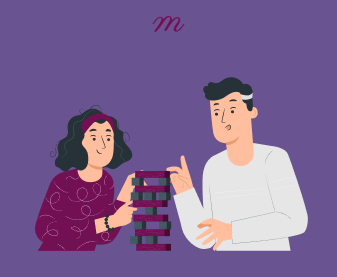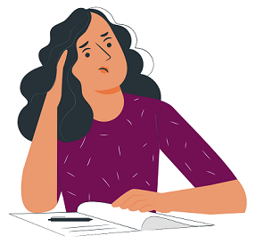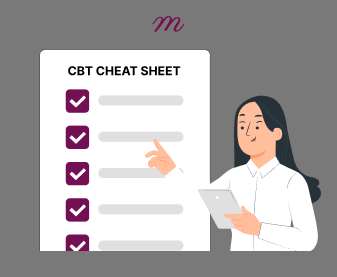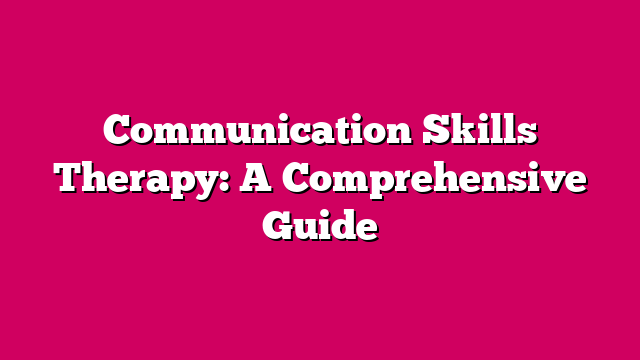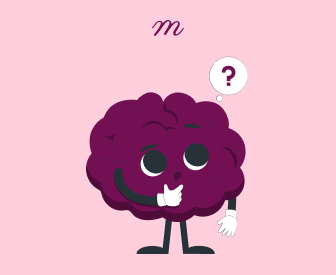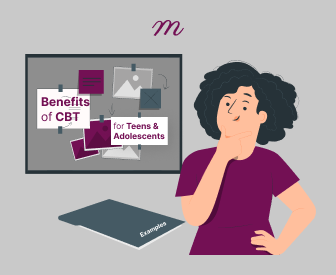Have your progress notes written for you automatically
Therapy is a collaborative journey of self-discovery, growth, and healing. While conversations and insights form the backbone of the therapeutic process, incorporating engaging and purposeful activities can elevate the treatment experience. These activities not only enrich therapy sessions but also empower clients to practice skills, deepen understanding, and sustain progress outside the therapeutic space. In this article, we’ll explore some of the best therapy activities that enhance treatment outcomes, foster engagement, and align with therapeutic goals.
Exploring Therapy Activities
These are just a few examples of therapy activities that can enhance treatment, but the possibilities are endless and can be tailored to fit each client’s unique needs.
Cognitive-Behavioral Therapy (CBT) Activities
CBT activities aim to help clients recognize and change negative thought patterns and behaviors. The hands-on nature of these exercises can make cognitive and emotional shifts feel more attainable.
- Thought Journaling: Clients are encouraged to record triggering events, associated thoughts, and emotional responses. Reviewing these journals in therapy can highlight recurring patterns, such as catastrophizing or overgeneralization. Therapists can then guide clients in challenging these thoughts.
- Exposure Activities: Gradual exposure to feared situations is a cornerstone of CBT for anxiety disorders. For instance, a client with a fear of public speaking might start by rehearsing a speech alone and then progress to delivering it to a small group.
- Imagery-Based Techniques: Visualizing positive outcomes or recalling a comforting memory can help clients counteract intrusive thoughts or manage stress.
Mindfulness and Relaxation Activities
Mindfulness promotes awareness of the present moment, fostering acceptance and reducing stress. Relaxation techniques help clients calm their bodies and minds, creating a foundation for emotional balance and clarity. These activities are especially beneficial for clients dealing with anxiety, depression, or trauma.
- Gratitude Journals: Encourage them to write down three things they’re grateful for each day. This practice can rewire the brain to focus on positivity and enhance overall well-being.
- Five Senses Exercise: Ground clients in the present moment by asking them to identify one thing they can see, one they can touch, one they can hear, one they can smell, and one they can taste.
- Progressive Muscle Relaxation: Guide them through a sequence of tensing and relaxing muscle groups to relieve physical tension and improve awareness of bodily sensations.
Art and Creative Therapy
Art therapy offers clients a way to process emotions and explore their inner world without relying solely on verbal communication. The creative process itself can be healing and therapeutic.
- Mandala Coloring: Providing mandalas for clients to color can promote relaxation and focus. It’s a particularly effective activity for clients who feel overwhelmed or scattered.
- Emotion Masks: Ask clients to create masks that represent how they feel inside versus how they present themselves to the world. This can spark meaningful conversations about authenticity and vulnerability.
- Music Therapy: Whether it’s listening to music, creating playlists, or composing their own songs, music can help clients access and express their emotions.
Role-Playing
Role-playing activities are incredibly versatile, offering clients a chance to rehearse new behaviors, process interpersonal challenges, or explore alternate perspectives.
- Conflict Resolution Scenarios: Practice assertive communication in a simulated conflict. This helps build confidence and refine problem-solving skills.
- Inner Dialogue: Have clients role-play a conversation between different parts of themselves, such as their inner critic and their compassionate self.
- Future Self Exercise: Clients can imagine and act out a conversation with their future self, exploring goals, hopes, and fears.
Physical and Movement-Based Activities
The connection between mind and body makes physical activities a powerful tool in therapy.
- Grounding Walks: Invite clients to take a mindful walk, focusing on the sensations of their feet on the ground and the sights and sounds around them.
- Expressive Dance: This type of dance encourages clients to use their bodies to convey emotions, release stress, and explore inner experiences in a nonverbal and creative way.
- Rhythmic Shaking: It involves clients standing in a comfortable position and gently shaking different parts of their body in a free-flowing manner. They might start with small movements in their hands or feet and gradually allow the shaking to encompass their entire body. This activity helps release built-up tension and stress stored in the muscles, promoting relaxation and a sense of grounding.
Group Therapy Activities
The shared nature of group therapy provides a unique dynamic for growth. Activities in this setting often emphasize collaboration, empathy, and mutual support.
- Shared Affirmations: Group members take turns sharing positive affirmations about each other. This fosters trust and reinforces strengths.
- Structured Feedback Rounds: Participants share constructive feedback about one another’s behaviors within the group, guided by the therapist to ensure safety and respect.
- Team Challenges: Activities like solving puzzles or completing physical tasks together can build camaraderie and highlight group dynamics.
Play Therapy for Children
Children process emotions and experiences differently than adults, making play therapy a valuable approach for younger clients.
- Puppet Shows: Allow children to act out their feelings or experiences through puppets. This can provide insight into their internal world.
- Therapeutic Games: Use board games or card games that teach emotional regulation, such as those focused on identifying feelings or practicing patience.
- Interactive Storytelling: Create a story together where the child takes the role of a hero overcoming challenges, helping them reframe their struggles in a positive light.
Aligning Activities with Therapeutic Goals
Every therapy session has its own rhythm and focus, but the main goal is always to support the client in achieving positive change. However, the path to healing often requires more than talk—it demands action and experiential learning. That’s where therapy activities come in.
Activities provide clients with opportunities to practice what they’ve learned in therapy. They help translate abstract ideas into concrete experiences, making the therapeutic process more relatable and applicable to daily life. For example, if a client struggles with social anxiety, role-playing can allow them to rehearse interactions in a safe environment, boosting their confidence and preparedness for real-life situations.
Moreover, these activities offer therapists valuable insight into how clients think, feel, and behave outside the therapy room. This information can guide the direction of therapy and ensure interventions are aligned with the client’s unique needs and goals.
Tailoring Activities to the Client
Each client brings a unique set of needs, goals, and preferences to therapy, and the activities used should reflect this individuality. A one-size-fits-all approach can undermine engagement, but thoughtfully tailored activities can resonate deeply, creating opportunities for meaningful growth and connection. Here are some specific examples of how activities can be customized for different populations and therapeutic goals:
- Adults Dealing with Workplace Stress: Mindfulness practices, such as guided breathing exercises or progressive muscle relaxation, can help adults unwind after a demanding day. For more active clients, grounding walks or somatic exercises, like rhythmic shaking, can release pent-up tension. Journaling about workplace triggers and practicing assertiveness through role-playing scenarios are also effective tools for managing professional challenges.
- Children with Behavioral Challenges: Younger clients often thrive with play-based interventions that make therapy engaging and non-intimidating. For instance, a child struggling with anger might benefit from “emotion charades,” where they identify and act out different feelings. Sand tray play can help children externalize their inner world, while storytelling allows them to process difficult experiences through metaphor and creativity.
- Adolescents Facing Social Anxiety: Teens may respond well to expressive outlets like art therapy, such as creating a collage that represents their social fears and strengths. Exposure exercises can also be tailored to their comfort level—for example, rehearsing how to initiate a conversation with a peer. Gamified CBT apps or interactive goal-setting tools may appeal to their tech-savvy nature.
- Couples Working on Communication: Relationship-focused activities, like a “communication check-in,” where partners take turns expressing their thoughts and feelings using “I” statements, can help improve understanding. Role-playing can also be valuable, allowing couples to practice navigating conflict or expressing appreciation for one another. Joint mindfulness exercises, such as synchronized breathing, foster a sense of connection and emotional attunement.
- Groups Fostering Cooperation: Group therapy activities should encourage trust and collaboration among participants. For instance, icebreaker games like “two truths and a lie” can help members feel more at ease. Problem-solving tasks, such as building a tower out of limited materials, promote teamwork and reveal group dynamics. Shared gratitude exercises, where each member shares something they’re thankful for about another participant, can build camaraderie and mutual respect.
Tailoring activities to the client ensures they feel relevant, engaging, and approachable. This personalized approach not only enhances participation but also creates a sense of safety and validation, increasing the likelihood of success in therapy. Whether the activity involves mindfulness, creative expression, or collaborative exercises, customization is key to unlocking its full potential.
Benefits of Therapy Activities
Therapy activities provide more than just a break from conversation—they’re transformative tools that can amplify the therapeutic process.
- Engagement: Activities can make therapy more dynamic, especially for clients who find it challenging to open up in traditional talk therapy.
- Skill-Building: Practicing new skills, such as assertive communication or stress management, prepares clients for real-world application.
- Self-Discovery: Activities encourage clients to explore thoughts and emotions they might not be aware of, fostering deeper insight.
- Measurable Progress: Tangible outcomes from activities, like completed worksheets or improved role-play scenarios, provide evidence of growth.
- Therapist-Client Bond: Fun or creative activities can create a sense of collaboration, making therapy feel less intimidating.
Why Therapy Activities Work: The Evidence Behind the Magic
Therapy isn’t just about talking—it’s about doing, feeling, and growing. Research shows that structured and experiential activities like mindfulness exercises, play therapy, and creative interventions bring therapy to life and make it more effective for clients of all ages.
Take mindfulness, for example. Studies have found that mindfulness-based activities can dramatically reduce stress and help people manage emotions more effectively. Whether it’s breathing exercises or guided meditation, these practices have been shown to ease anxiety and depression in adults [1]. Even children and teens benefit—mindfulness boosts their ability to cope with challenges and improves their overall well-being [2].
For children, play therapy is a game-changer. It creates a safe space where they can process trauma, learn to express emotions, and develop social skills—all through the power of play. Research shows this approach works wonders, especially for children [3]. Child-centered play therapy, in particular, helps children explore their feelings without fear, leading to greater emotional growth and resilience.
And then there’s experiential therapy—think Gestalt or process-experiential approaches—which invites clients to dive deep into their emotions. Activities that tap into creativity, role-playing, or even physical movement have been linked to stronger self-esteem, fewer depressive symptoms, and better relationships [4]. These hands-on methods make therapy feel tangible and personal, giving clients the tools to connect with their emotions in powerful ways.
The evidence is clear: activities in therapy aren’t just “extras”—they’re essential tools for creating meaningful change. Whether it’s calming the mind, sparking creativity, or helping someone feel seen, these approaches make therapy more engaging, effective, and transformative.
Some Tips for Therapists
To get the most out of therapy activities, therapists should:
- Be Attuned: Pay attention to how clients respond and adapt activities as needed.
- Provide Context: Explain why the activity is relevant and how it aligns with the client’s goals.
- Debrief: After the activity, discuss what the client learned and how it applies to their daily life.
- Stay Open: Be willing to try different approaches to find what resonates best with each client.
Final Thoughts
Therapy activities are not just supplements to talk therapy—they’re vital components that bring treatment to life. By offering clients hands-on ways to engage with their emotions, practice new skills, and build confidence, these activities bridge the gap between understanding and action.
From CBT exercises to mindfulness practices, art therapy, and movement-based interventions, there’s no shortage of tools to enrich the therapeutic process. When thoughtfully chosen and skillfully implemented, these activities can make therapy not only more effective but also more enjoyable and empowering for clients.
References
[1] Hofmann, S., Sawyer, A., Witt, A., & Oh, D. (2010). The effect of mindfulness-based therapy on anxiety and depression: A meta-analytic review. Journal of Consulting and Clinical Psychology, 78 2, 169-83 . https://doi.org/10.1037/a0018555
[2] Kallapiran, K., Koo, S., Kirubakaran, R., & Hancock, K. (2015). Review: Effectiveness of mindfulness in improving mental health symptoms of children and adolescents: a meta-analysis. Child and adolescent mental health, 20 4, 182-194. https://doi.org/10.1111/CAMH.12113
[3] Bratton, S., Ray, D., Rhine, T., & Jones, L. (2005). The Efficacy of Play Therapy With Children: A Meta-Analytic Review of Treatment Outcomes. Professional Psychology: Research and Practice, 36, 376-390. https://doi.org/10.1037/0735-7028.36.4.376
[4] Missirlian, T., Toukmanian, S., Warwar, S., & Greenberg, L. (2005). Emotional arousal, client perceptual processing, and the working alliance in experiential psychotherapy for depression. Journal of Consulting and Clinical Psychology, 73 5, 861-71. https://doi.org/10.1037/0022-006X.73.5.861


